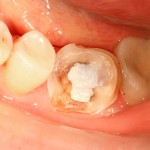
Restoration of teeth due to damage caused by dental caries remains a significant element of dental service provision. Dental amalgam has been a major restorative material for more than a 100 years but developments in composite materials have seen their use in posterior restorations increase significantly in recent decades. With agreement to phase down the use of amalgam this will only continue to increase.
The aim of this review was to assess if there was any difference in the failure rate of single-unit prostheses versus direct restorations in vital posterior teeth with sufficient remaining structure.
Methods
Searches were conducted in the Cochrane Oral Health Group Trials Register, Cochrane Central Register of Controlled Trials (CENTRAL, Medline and Embase databases with no language restrictions. Randomised controlled trials (RCTs), quasi-experimental studies, and observational studies in which vital posterior permanent occluding teeth (population) were treated with either single complete crowns (intervention) or direct restorations (comparison) and followed for at least 3 years and published between January 1993 and February 2015 were considered. The main outcome was failure defined as any complete or partial loss of the restoration that required replacement or repair.
Two reviewers independently selected studies, abstracted data and assessed study quality. The data was organized into subgroups according to the type of restoration and number of remaining tooth walls. For each subgroup, the outcome was treated as a continuous variable (0%-100%) reported weighted arithmetic mean (WAM) 5-year failure rate calculated.
Results
- 14 studies (5 RCTs, 6 prospective, 3 retrospective) involving a total of 308744 restorations were included.
- 2 RCTs were considered to be at moderate risk of bias, 3 at high risk.
- 3 of the observational studies were considered to be of high quality.
- Mean age of patients was 29 (range 6-80).
- The WAM 5-year failure rate indicated that the failure rate was higher in teeth with less remaining structure (fewer than 2 remaining walls)
- Composite resins had a significantly higher failure rate than amalgams, regardless of the remaining tooth structure.
- In teeth with fewer than 2 remaining walls, direct restorations presented significantly higher failure rates than crowns.
Conclusions
The authors concluded
Despite its limitations, our study shows that restorations in posterior vital teeth should be planned according to the amount of remaining tooth structure because of the relationship with failure rate. In terms of treatment selection, direct restorations are a valid option in posterior vital teeth with 2 or more remaining coronal walls; however, crowns may be preferred in teeth with less remaining structure. Regardless of the amount of remaining tooth structure in posterior teeth, amalgam seems to perform better than composite resin.
Comments
A good search strategy has been employed for this review on a number of major databases. Data from observational studies, prospective and retrospective has been included and as there is a greater potential for bias in these studies this should be taken into consideration. However, The authors have presented details of the accumulated failure rates excluding various study types so the reader can be aware of the impact. The discussion is also helpful in this regard, For example when discussing outcomes for restoration with 4 remaining walls they highlight that RCT evidence suggest that composite failure rate is higher but the lower quality observational data suggest the opposite.
The findings of the review highlight that amalgam preforms better compared with amalgam in teeth with 4,3,2 and 1 remaining wall although for restorations with 2 or 1 wall crowns are a better treatment option. It being suggested that failure risk increases by 30-40% for every extra missing wall. However, the heterogeneity of the included studies and the limited quality of the included studies mean there is still uncertainty and well-conducted higher quality studies would be helpful. The findings are similar to recent reviews comparing amalgam and composite restorations ( other references).
Links
Primary paper
Afrashtehfar KI, Emami E, Ahmadi M, Abi-Nader S, Tamimi F. Failure rate of single-unit restorations on posterior vital teeth: A systematic review. J Prosthet Dent. 2016 Oct 17. pii: S0022-3913(16)30353-5. doi:10.1016/j.prosdent.2016.08.003. [Epub ahead of print] Review. PubMed PMID:27765400.
Other references
Dental Elf – 13th Jul 2015
Amalgam has lower failure rate than composite in restorations
Dental Elf – 7th Apr 2014
Amalgam still an effective filling material for posterior teeth

Amalgam outperformed composite in range of posterior cavity types https://t.co/S3Lc4rWUkK
Amalgam outperforms composite in range of posterior cavity types https://t.co/RTOa8DjXZq
Amalgam outperforms composite in range of posterior cavity types https://t.co/S3Lc4rWUkK
Composite had a higher failure rate than amalgams, regardless of the remaining tooth structure. https://t.co/S3Lc4rWUkK
Higher failure rate for restorations with less remaining tooth structure https://t.co/S3Lc4rWUkK
Direct restorations good option in posterior teeth with 2 or more coronal walls https://t.co/S3Lc4rWUkK
Don’t miss- Amalgam outperforms composite in range of posterior cavity types https://t.co/S3Lc4rWUkK
Derek-in your second paragraph under comments I think you meant composite not amalgam(The findings of the review highlight that amalgam preforms better compared with amalgam). As always thanks for your great reviews, they are so helpful. I do appreciate all your hard work.
[…] Nov 2016 – Amalgam outperforms composite in range of posterior cavity types […]